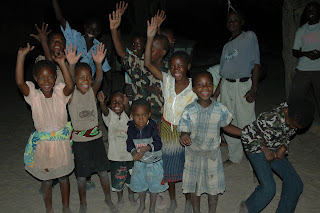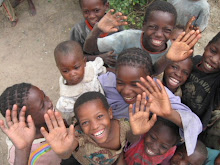
Zambia, November 2008
More photos of the HFH Global Village build in Zambia and our adventures in Botswana/around Zambia can be found at:
www.picassaweb.google.ca/littledrummergirl1

After over 30 hours of flying, airport transfers and waits, we finally arrived in
Lusaka, Zambia to meet the HFH affiliate staff, Charity, and pick up our supplies
including 600 liters of bottled water, and then head out for our build destination…
When we arrived in the village of Numunga we were greeted warmly with cheers, songs and introductions to everyone. That evening the children performed dances and songs for us. Their enthusiasm and energy was infectious and it seemed to give us just the right boost to begin the build project.

Mr. Wilson, the patriarch of the family and owner of a home built by another HFH GV project, graciously offered to accommodate our 11 member team. He and his family vacated to his daughter’s home next door for the duration of the build.
We managed to squeeze into the tiny rooms, sleeping on mats with our mosquito nets. Being unfettered by bugs and 8 legged creepy crawlys, I gladly took the window spot and got plenty of fresh air (and a little harmless rain too!).

They were wonderful hosts and we enjoyed being their guests and their welcoming us to take part in daily activities and chores, my favorite of which was cooking and spending time with the women in their round ‘boma’ style kitchens.

There was no electricity, running water or plumbing, although within 300 meters there was a bore hole with a manual pump which we were told had been previously built by an NGO (non-governmental organization), which the children were eager to show us how to use and often argued with each other over who would do this!


The family helped us obtain barrels of water for our solar showers, which were set up on wooden poles in shower stalls made of thatch/grass, yet another ingenious construction that worked wonderfully!


I loved their mildly spicy tomato base sauce they would often ‘stew’ the meat or eggs in, made with pepper, tomatoes, paprika, oil, and occasionally curry, and loved learning about how things were prepared. As far as African rural villages go, this was about as authentic as it gets and I was excited to have the opportunity to be a guest there!






























































